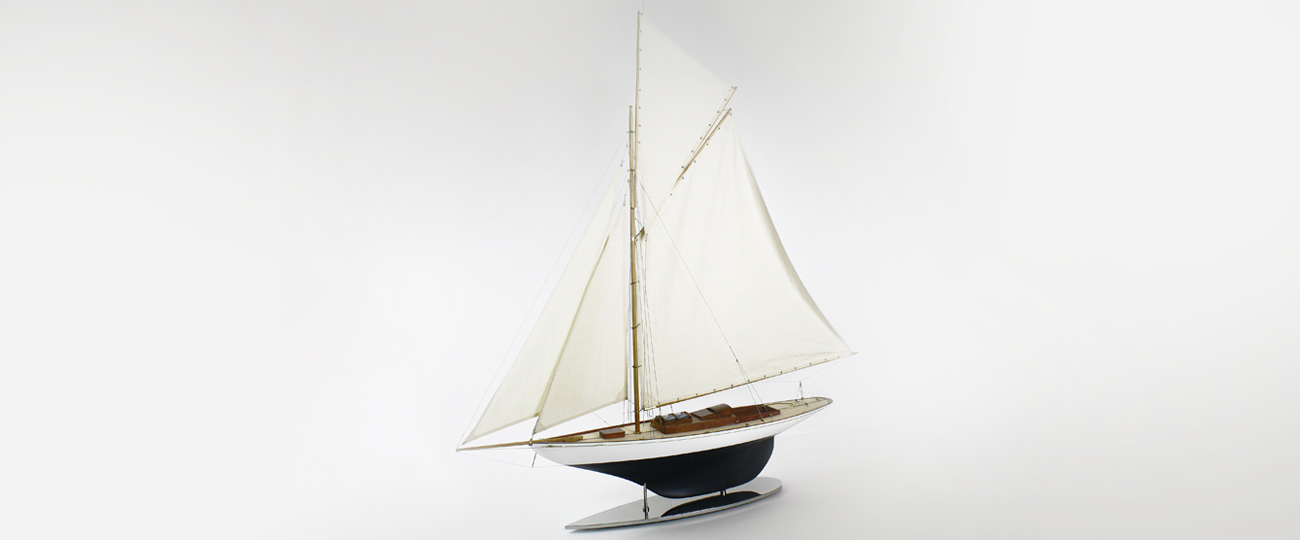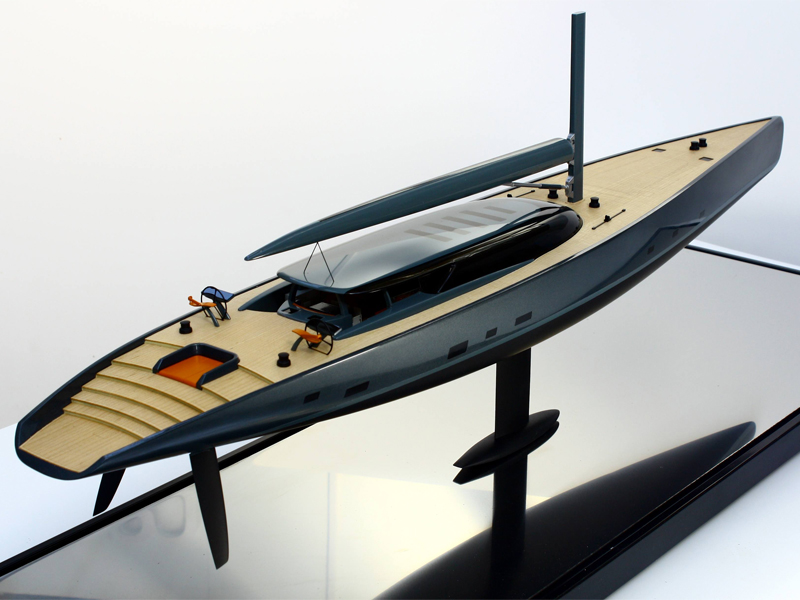Bristol-based Amalgam Modelmaking has once again gained their Cyber Essential Certification. After verification of their…
Superyacht DESIGN Week – to 3D-print or not to print superyacht models?

How has 3D printing transformed model making for superyacht design? Our view from the Amalgam deck.
The last case study published from our maritime models team was to show off this 
1/12th scale hand finished model of the classic TERN yacht.
The scale was relatively large for this, because it’s a replica of a much smaller yacht. Typically we make superyacht models at 1:50 or 1:75, however it does depend on what the client wants – and how they are going to present, use and transport the model.
Next week the team’s director, Chris Conlon, will be heading to see what’s on at Superyacht DESIGN Week in London. This year’s event is exploring how the yacht industry can adopt techniques to create more sustainable products, and invest in more creative design. So, it’s a good time to explore how 3D printing has changed our approach making to naval and marine architectural models.
Chris, what’s the largest superyacht model that’s been 3D printed in Amalgam’s workshop?
“It is a 1:200 scale replica model of a motor yacht, its original size extending over 100m. The model, measuring 600mm, was entirely 3D printed in high detail. It was a rapid turnaround project – taking just two weeks to make it.”
And what makes the difference for a fast turnaround when making a model?
“The key for that one was the quality of the CAD files supplied by the client with the brief. Designs are developed using a variety of 3D software programs – like Rhino or Solidworks. Amalgam invested in the hardware and software, and has been developing considerable experience, so we can convert many different formats into 3D print ready files. Of course, some clients supply their CAD files ready to go. “
So, if that’s the case, how does 3D printing actually speed up the model making process?
“Here in the workshop we are always testing new and quicker ways to make accurate, beautifully finished yacht models. The simplest time saver is that we can set the 3D printer to run overnight. Parts are ready for finishing the following morning by the team – instead of working through the night in the days of traditional hand making.”
“3D printing is not the only trick in our toolbox. We invested in a particular CNC machine with yacht hulls in mind. Our machine can handle a hull up to 2 metres in length. The materials are cut with precision, reducing the amount of finishing effort required.
So we find 3D printing is particularly useful on superyacht models for:
- Quick production of the furniture
- Complex forms such as the mast and communications equipment on motor yachts
- Multiple runs of on-board tender and toys, like ribs/inflatables
In model making, the finish is best done by hand to achieve the desired realisation of a superyacht design. So, in spite of advances in technology and machinery, there’s no substitute for some elements, for example, traditional metalwork for handrails.
I’ve got some samples of 3D prints to take with me to the Superyacht Design week show – the 45mm aeroboat (See image above) is one of the smallest we’ve printed and I’m looking forward to hearing what people in the industry would like to try next with 3D printing – or other applications where they’ve already tried it successfully.”
Head to Our Work to read more about the superyacht model we made of the 58m Dubois’ Sloop
 (also described as the Beast) for the designer to unveil at Monaco Yacht Show last year. (Click for video)
(also described as the Beast) for the designer to unveil at Monaco Yacht Show last year. (Click for video)
If you would like to talk to Chris at Superyacht DESIGN, please call on 0117 9249596 or send an email info@amalgam-models.co.uk



